The eastern gray squirrel is one of the most recognizable animals in North America, beloved by those who feed them peanuts in the city park and infamous among birders for their backyard feeder raids. Gray squirrels have also been spread well beyond their original range to the western United States, the United Kingdom, Europe, South Africa and other parts of the world.
The gray squirrel is so familiar that most of us pay it little mind when it scurries around the neighborhood.
But sometimes gray squirrels are not gray. And when a squirrel is white or black, people do pay attention. In fact, these striking animals can earn almost celebrity status. This has given rise to “squirrel towns,” communities known for their white or black squirrels. These towns typically have squirrel festivals, sell squirrel souvenirs and fiercely guard these animals.
How common are white squirrels and black squirrels? Is there an advantage to having this coloration? And why do strikingly colored squirrels appear clustered in certain small towns?
This blog will offer some answers on these common mammals of uncommon color.
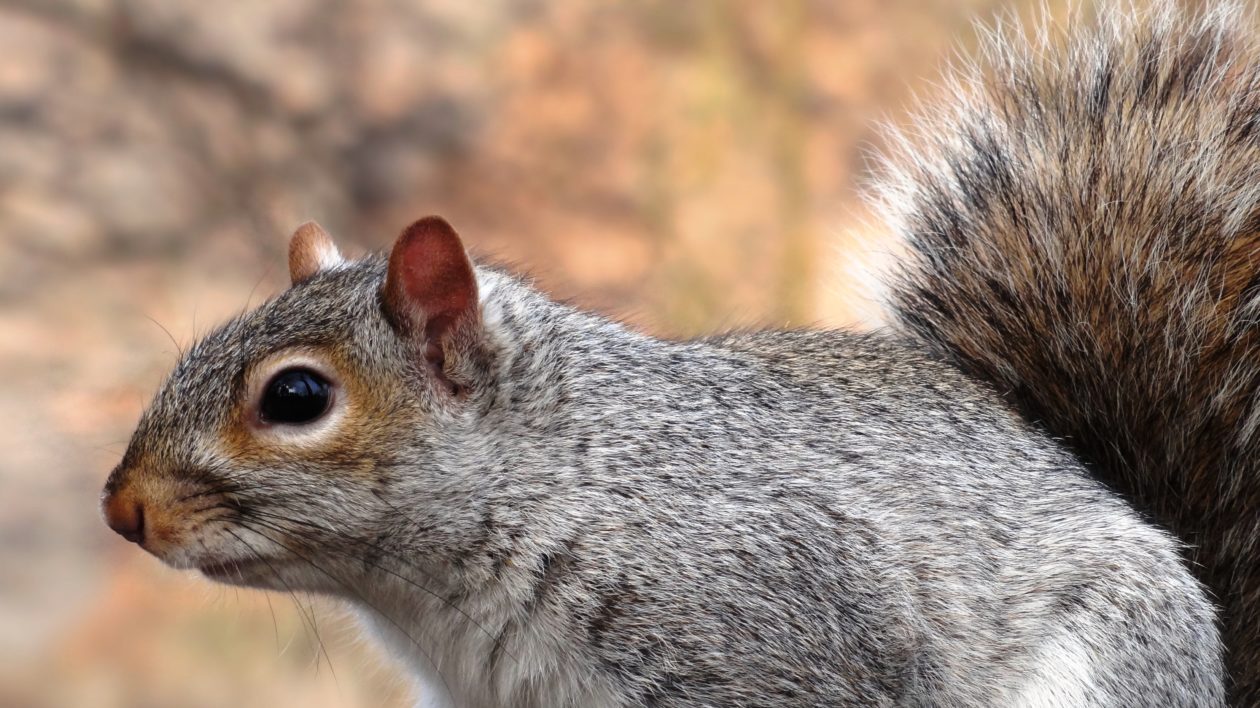
50 Shades of Gray Squirrel
This article focuses on the eastern gray squirrel (Sciurus carolinensis). It should be noted that other squirrel species (including the fox squirrel and red squirrel) also exhibit similar color variations. And globally, tree squirrels come in a variety of striking colors and sizes – perhaps a topic for a future blog.
Like many mammals, the eastern gray squirrel exhibits a considerable variation in its coat coloration. Most are, well, shades of gray. You might notice this if you closely observe the squirrels at your feeder. Some may appear noticeably lighter or darker.
When they are white or black, they are difficult to miss. What’s going on?

While certain locales have become known for their differently colored squirrels, you could actually see white squirrels or black squirrels anywhere squirrels are found.
White squirrels are often referred to “albino.” Seeing an albino squirrel is extraordinarily rare, with a notable exception I’ll discuss later.
Albinism is a congenital condition defined by the absence of pigment, resulting in an all-white appearance and pink eyes. Many plant and animal species exhibit albinism (including humans). It’s difficult to accurately determine how frequently this condition exists in wild animals, because albino animals tend not to survive long.
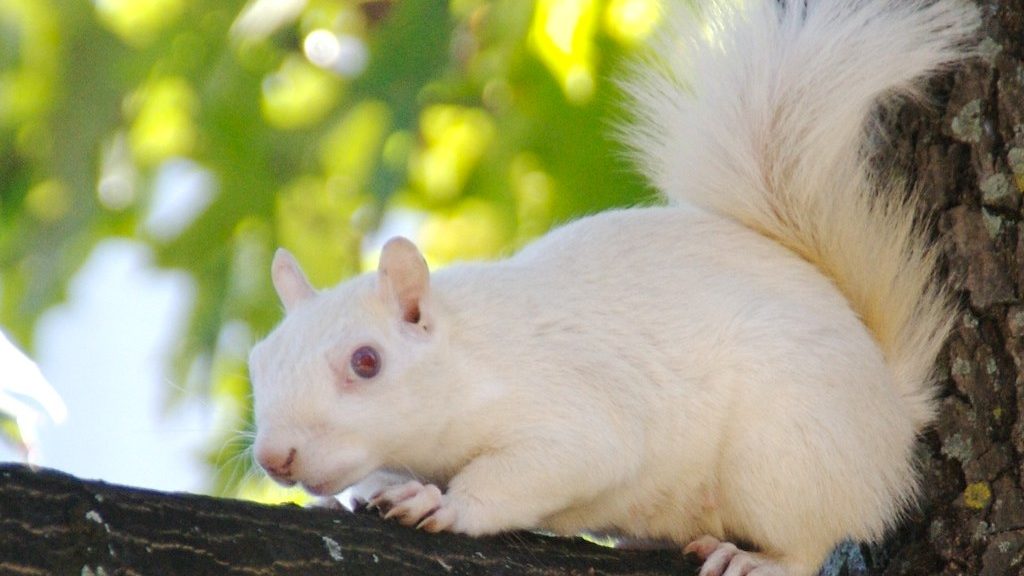
Gray squirrels jump from tree to tree, and must quickly evade predators. This requires keen eyesight. An albino squirrel would not only stand out to a predator, but the squirrel would have difficulty seeing threats or making the necessary leaps.
Most white squirrels are actually leucistic. Leucism is a recessive genetic trait found in all mammals. Leucistic animals lack pigment over all or part of their bodies; squirrels exhibiting this trait come in varying levels of white. Most times when people see a white squirrel, it’s a leucistic one.
How common is leucism? It’s hard to know. While a leucistic squirrel’s eyes may be better than an albino squirrel’s, a white animal still makes an easy target for a predator. They are likely quickly removed from the population. Unless, that is, they have some added protection.
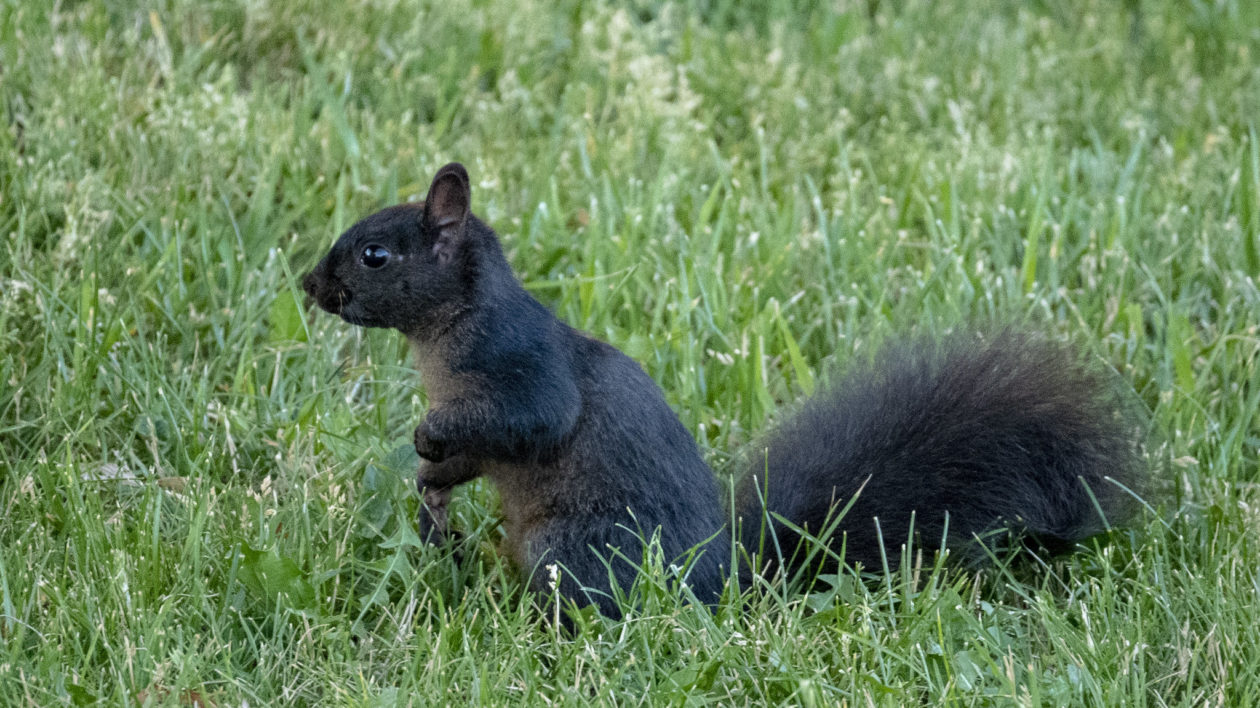
Seeing the Forest for the Squirrels
Biologists estimate that less than 1 percent of all gray squirrels are black. Still, this color variation is more commonly seen by hunters, hikers and naturalists just out for a walk in the woods. My grandfather had a taxidermied one he bagged in the central Pennsylvania hardwoods.
Some argue that at one point, many more gray squirrels were black. In the 1700s, much of eastern North America would have been covered with dense forest. At that time, it appears more squirrels were reported as black than gray. black than gray. This, some researchers suggest, is due to the old-growth eastern forests and dense canopy. Darker squirrels blended in better.
As forests were cut and more open environments prevailed, they argue, lighter-colored squirrels survived better. Now, black squirrels are rare and gray squirrels predominate.
Other researchers, though, claim that squirrels have not considerably changed, and records of black squirrels are more folklore than fact.
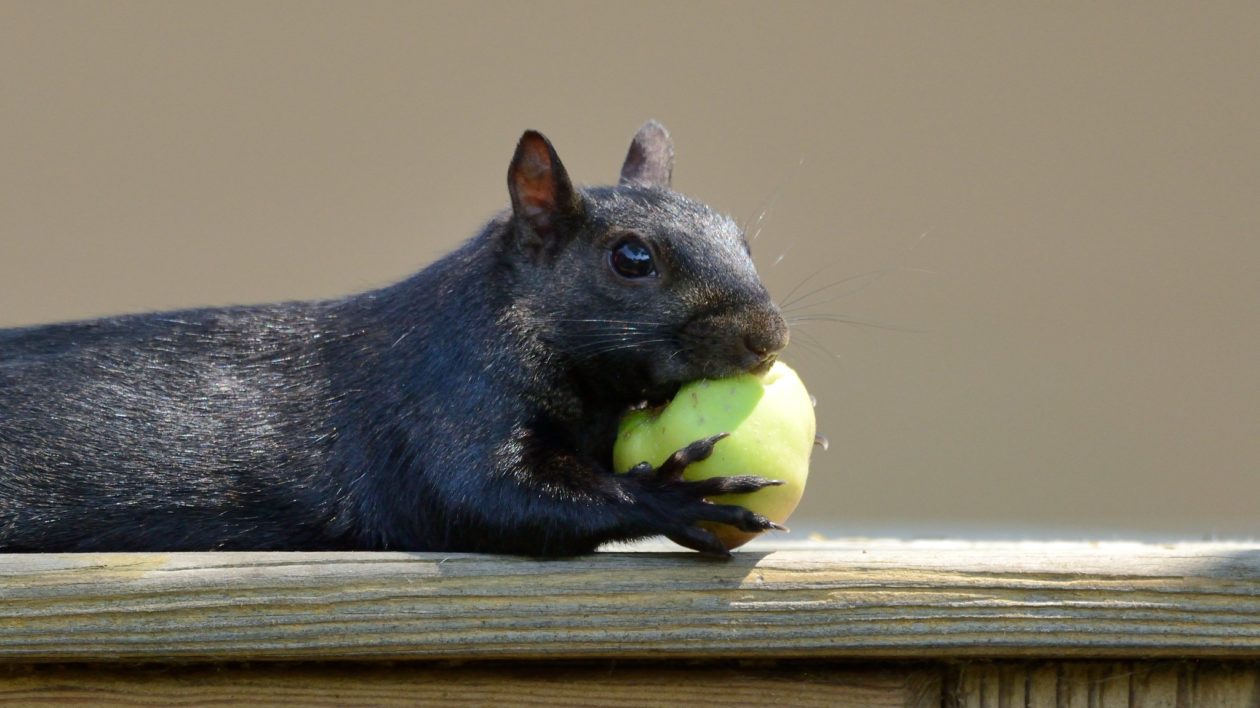
Whatever the case, a paper in 2019 provided new genetic information on black coloration in gray squirrels. Published in the journal BMC Evolutionary Biology, the research found that the allele, or a variant form of a specific gene, that causes a squirrel to be black did not originate with gray squirrels. It likely resulted from gray squirrels interbreeding with fox squirrels (a species that also has a black morph).
Unlike white squirrels, in some habitats a black squirrel could be quite camouflaged. Some have hypothesized that the black coloration could even be an advantage in more northern climes, allowing the animals to absorb more heat in the winter.
Black squirrels appear to be a more predominant color morph in Ontario, Michigan and other areas around the Great Lakes. They are also often easier to see in urban areas. Some believe this suggests that this coloration has some kind of adaptive value in more human-dominated landscapes. That may be so. But then again, the presence of “squirrel towns” suggests perhaps a more simple answer – we simply like having these animals around.
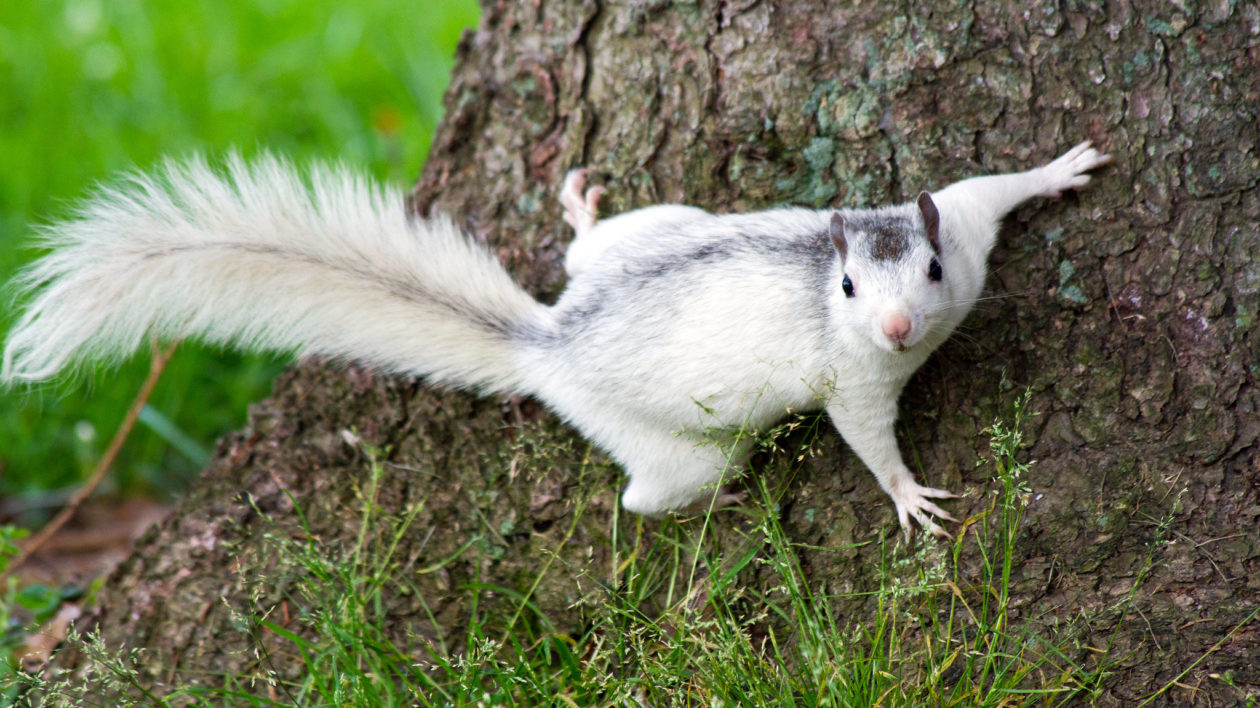
Squirrel Town, USA
A list of communities around the United States advertise their populations of black squirrels or white squirrels. These squirrels become popular tourist attractions. Some universities adopt the squirrels as unofficial mascots. Shops sell squirrel paraphernalia, host squirrel-themed events and pass laws to protect the squirrels.
And the towns are often competitive with each other, often claiming their own squirrels as more populous or the “originals.”
The squirrel towns often have an “origin story.” As with many origin stories, there are often conflicting accounts and most seem more mythical than fact. Often, the white squirrels are reported to come from circuses or exotic animals dealers.
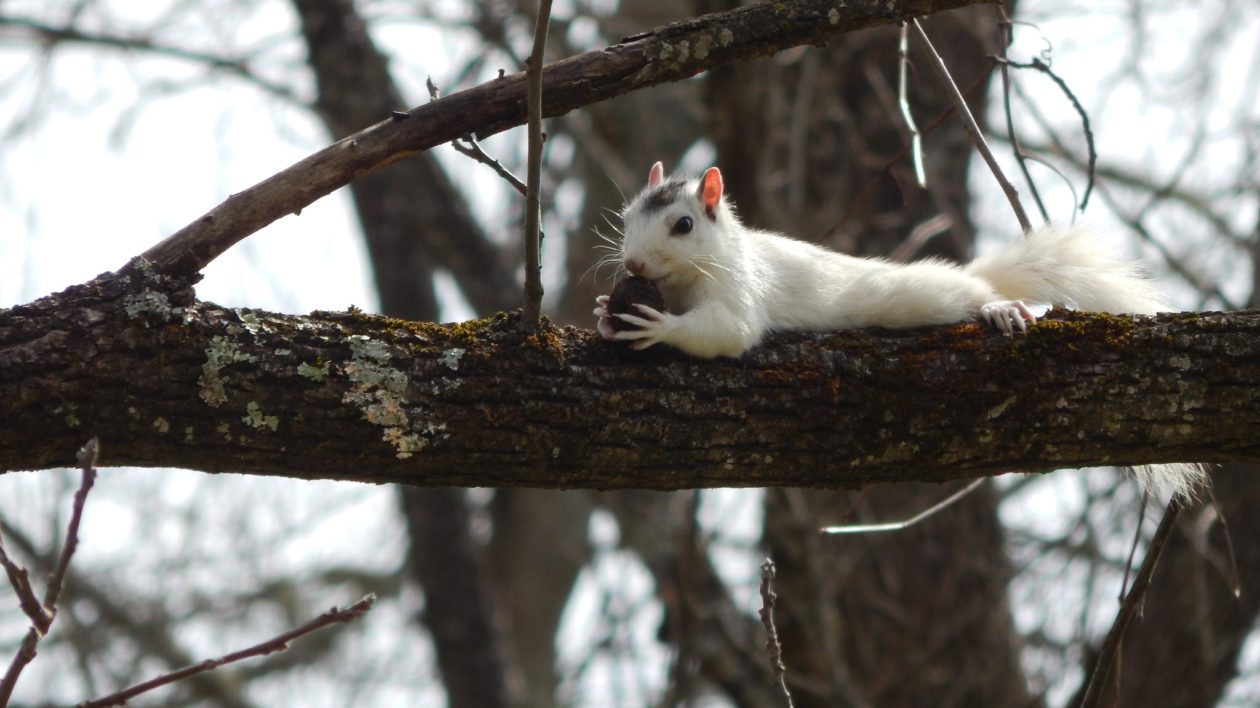
It is difficult to track the veracity of such reports, but one thing is clear: these squirrels clearly originated from somewhere other than the town. This can be verified in that many of these towns lacked historical records of, say, white squirrels. So a couple of white squirrels were nurtured and released. They were protected as curiosities, and prospered.
One such example is Brevard, North Carolina. These squirrels reportedly came from a region of Florida where white squirrels are reported more frequently than elsewhere. They were released in Brevard (and likely, elsewhere). In most areas, white squirrels appear and disappear, fleeting sightings. As they sometimes do, in Brevard they became an established color variant, what some call “white squirrel colony.” In reality, this just means that a noticeable percentage of the squirrels in Brevard are white.
The Brevard squirrels are notable in that they have a dark patch on their heads as well as a dark stripe along the back that is deeper on the shoulder. There is a White Squirrel Institute in Brevard devoted to studying the squirrels and comparing them to other white squirrel “colonies.”
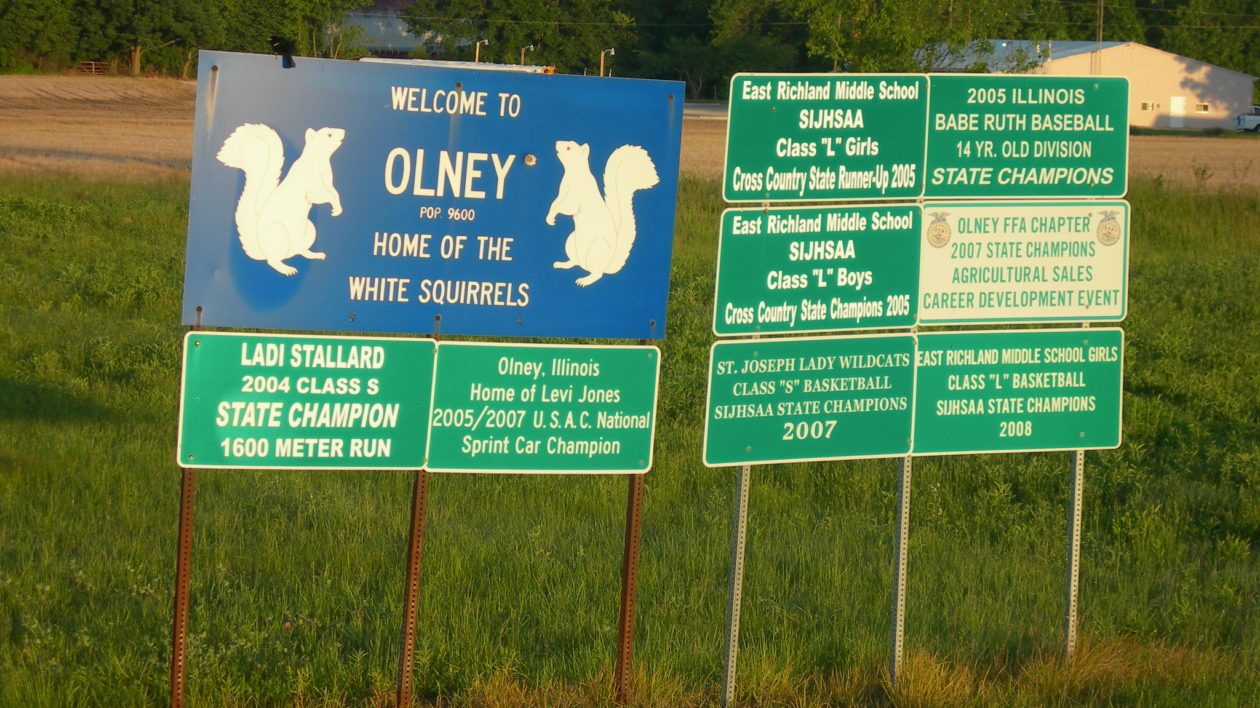
The Town of Albino Squirrels
The white squirrels of Olney, Illinois are even more unusual: these squirrels are actually albino. According to some sources, about 12 percent of Olney’s squirrels are albino.
Olney, too, has an origin story, with either the original albino squirrels orphaned by a hunter or rescued by a concerned citizen. They were raised in a saloon and released into the local population.
Olney’s claim to fame is albino squirrels. Community members go to a lot of effort to protect them via strict prohibitions on hunting, squirrel roadway crossings and dog leash laws. When a declining albino squirrel abundance was attributed to cats, the community passed a cat leash law, too.
These squirrels have been studied extensively and featured on many nature documentaries, including David Attenborough’s BBC Earth. This one of the very few instances where albinism has an advantage for an animal.
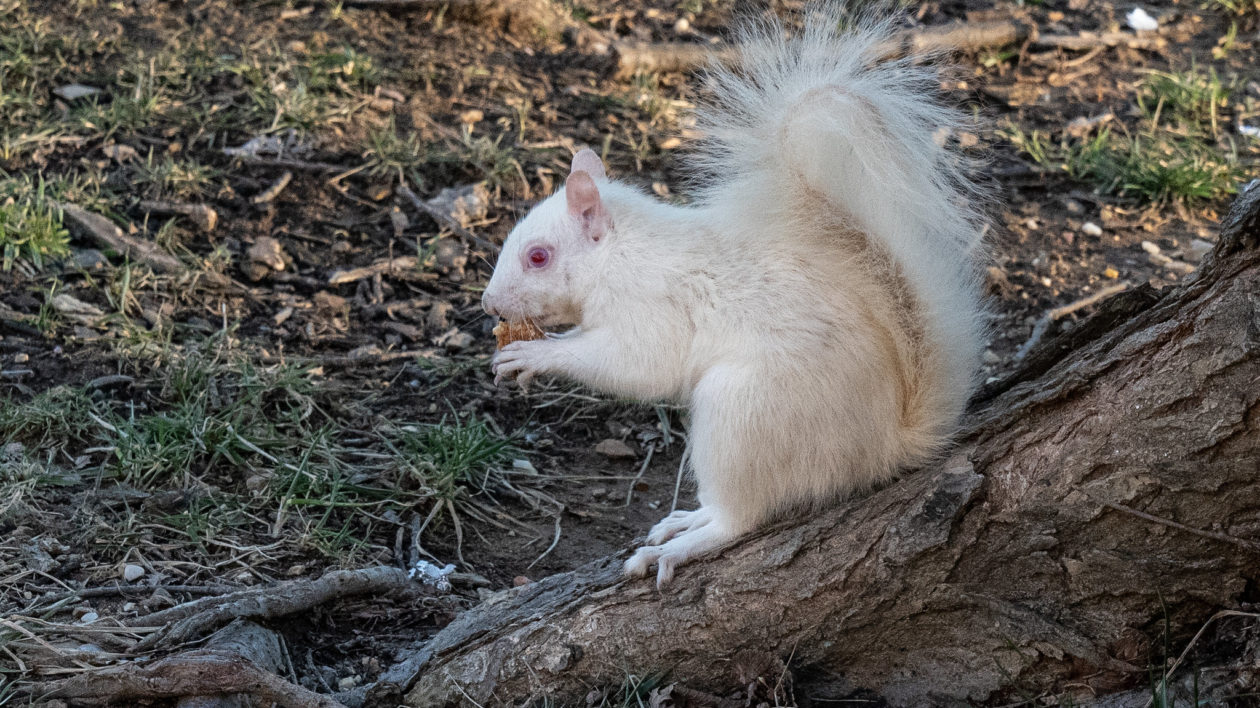
National Squirrels
Because black squirrels are seemingly more prevalent in the “wild” than white squirrels, it’s probably not surprising there are more black squirrel towns. People move around charismatic wildlife. They especially move around squirrels. People have released squirrels to towns and cities around the globe.
So it’s not surprising that when people captured black squirrels, they often stocked them elsewhere. Most towns advertising their black squirrels have this as the backstory. Michigan State University undertook an effort to reintroduce black squirrels to its campus. John Harvey Kellogg, best known as the inventor of corn flakes, was also a squirrel fan. He was concerned about decimated squirrel populations (seriously), and released about 400 squirrels to northern Michigan, some of them black morphs.
Perhaps the most surprising, and famous, involves the black squirrels of Washington, DC. President Theodore Roosevelt, well known as a naturalist and wildlife enthusiast, made two releases totaling 18 black squirrels (captured in Canada) on the National Mall. Today, an estimated 5 to 25 percent of the squirrels in the area are black morphs.
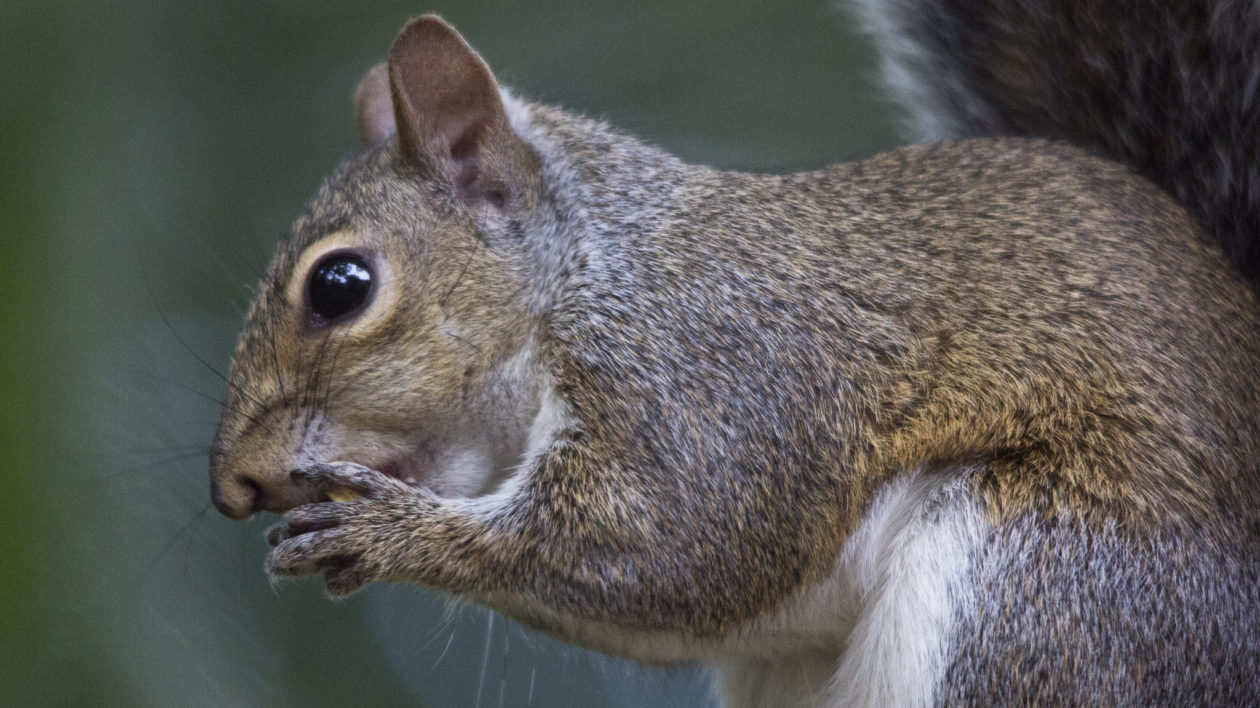
Squirrel Mapper
Eastern gray squirrels are one of the most adaptable mammals. But how are they faring as they live in suburbs, small woodlots and city parks? How are they changing?
You may notice the black squirrels and white squirrels. Perhaps, if you’re a certain kind of naturalist, you’ll even make trips to see them in their famous towns.
But the local squirrels are worth watching too – as many of us know as we watch their antics. Your observations can help research. Understanding how animals adapt to humanity can help conservationists plan urban parks and other protected areas.
An iNaturalist project called Squirrel Mapper seeks your squirrel observations, documenting how squirrels are changing as they adapt to life in human-dominated landscapes.
So keep an eye out on the local tree squirrels. You can help science – and you might be rewarded with a sighting of a squirrel of a different color.
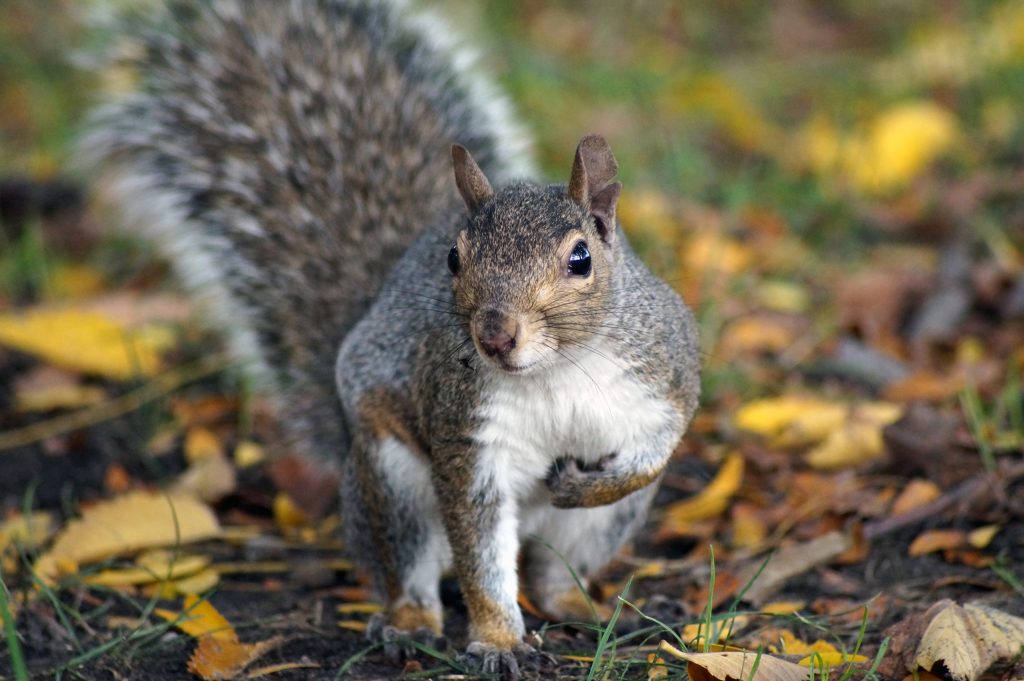



I live in Shoreview, Minnesota. Just this morning, I looked out and saw a black squirrel running around with a couple of grey squirrels. I hadn’t seen a black squirrel in this area for quite some time. Not more than a minute later, I glanced up the street and saw a white squirrel run into view. I was kind of amazed. I had never seen a black squirrel and a white squirrel in any proximity to each other. I had captured some photos and a video of a white squirrel in my yard almost two years ago.
A few minutes later, I saw a smaller black squirrel interacting with some greys. The black squirrel ran up a tree and not 30 seconds later, a smaller white squirrel appeared and ran up the same tree. All of the squirrels worked their way up the street and eventually went out of view. It seemed that the white squirrel was following the other squirrels as opposed to interacting with them. Just as I was about to submit this post, I saw the white squirrel running completely by itself. Quite the interesting diversion on a quiet Saturday morning.
Is there an explanation for the unexpected squirrel behavior I observed when visiting Loring Park, Minneapolis? The squirrels in the park are not shy with people, who obviously throw them food. There are plenty of grey squirrels, but there are also many black and albino squirrels. I had some leftover shoestring French fries in a bag, and was tossing pieces to the squirrels. Without exception, all the grey squirrels gobbled them with gusto. But not a single black squirrel or albino would eat them. WITHOUT EXCEPTION, the blacks and albinos would just pick them up and then toss them away.
What is it about black and albino squirrels that made them disdain the shoestring French fries while the grey squirrels all loved them?
I live in Dover, Ohio. We have a large black squirrel population. They were brought from Kent, Ohio by a former resident of Dover. It is common for me to see 6-8 squirrels at a time playing in my yard and living in my trees. My neighbors and I have problems with them chewing and raiding bird houses.
We have a lot of black squirrels where I live in Maryland. However, I have one who I feed daily who is majority black, but with a white belly and one white foot.
I am so fascinated with squirrels . Lately, a white squirrel has been living in our backyard . Trying to keep an eye if we have a couple . Occasionally this creature comes to our front porch look for something to eat . I put peanuts in front of our door . Our cat loves watching squirrel . One stands out . The white one . I felt so fortunate to have seen this extremely rare creature.
Saw a black squirt in Topeka two days in a row. Knew they were rare but looked them up. Beautiful squirt.
Back in the 80’s I was a student at U of Maryland at College Park and there were a lot of Black Squirrels on campus……..I mean a lot compared with other areas I knew of. And, a lot of squirrels altogether……they would climb into the trash cans and come out with nachos and cheese sauce to eat……probably all had heart disease!!!
I was visiting my mom who lives on the south side of Minneapolis, Minnesota and I seen an albino squirrel. I was amazed that was my first time ever seeing one!!!
Twenty ears ago when we built our house in a rural area, we saw several albino squirrels in the tree line along our property.. Over a period of three or so years they disappeared, I thought the red tail hawks must have gotten them, because they have such incredible eye sight and they swoop around us quite often. BUT, this morning one showed up, to raid the bird feeders. It’s definitely albino, has pink eyes. I managed to grab my Nikon and got a fairly good shot.
I live in Detroit Michigan…..
Ours have gradually changed from brown to the smaller black ones.
The black ones are all l see now.,
I have lived in the same neighborhood for 36 years
… fascinating….
We have both a black and a white squirrel in our neighborhood, they have been around for a couple years now. We were wondering how long they live. Yes the white squirrel does appear to have pink eyes.
Interesting. I have recently spotted a very unique squirrel on my feeder … it is black on the bottom 2/3 and cream on the upper 1/3. Wish I could send a pic.
We’ve seen the white squirrels in Brevard, NC and made a special trip to the white squirrel shop! Great fun!! We also have several black squirrels in our neighborhood (west Chicago suburbs). They are always neat to see.
I live in Fergus Falls,Mn.We have a big population of black squirrels here.
In the 1970’s black squirrel density in Montgomery County, MD, declined with the square of the distance from the National Institutes of Health in Bethesda. Local lore, unconstrained by peer-review, was that this distribution resulted from the release of an inbred line of black squirrels that had been used in experiments at NIH because the PI didn’t have the heart to kill them. I have no idea whether or not the explanation is correct, but the density pattern was real (7th grade science fair project by M. Lerdau).